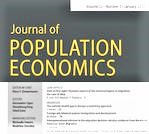A new GLO Discussion Paper contains robust evidence that retirement causally improves overall life satisfaction.
The Global Labor Organization (GLO) is an independent, non-partisan and non-governmental organization that functions as an international network and virtual platform to stimulate global research, debate and collaboration.
GLO Discussion Paper No. 536, 2020
Does retirement lead to life satisfaction? Causal evidence from fixed effect instrumental variable models – Download PDF
by Nguyen, Ha Trong & Mitrou, Francis & Taylor, Catherine L. & Zubrick, Stephen R.
GLO Fellow Ha Trong Nguyen
Author Abstract: This paper presents robust evidence that retirement causally improves overall life satisfaction which is subsequently explained by improvements in satisfaction with one’s financial situation, free time, health, and participation in local community activities. Furthermore, while the positive wellbeing impact of retirement is sizable initially, it fades after the first 3 years. We find that the improvements in financial satisfaction upon retirement are only observed for low-income individuals. However, the wellbeing impact of retirement does not differ by gender, educational, occupational, economic or marital backgrounds. We also explore several potential explanations for our findings. This paper employs a fixed effect instrumental variable model, which exploits the discontinuity in the eligibility ages for state pension to construct an instrument for retirement, and 18 waves of high-quality Australian panel data. The results also suggest that failing to adequately account for the endogeneity of retirement would result in a downward-biased estimate of a positive wellbeing impact of retirement.
GLO Discussion Papers are research and policy papers of the GLO Network which are widely circulated to encourage discussion. Provided in cooperation with EconStor, a service of the ZBW – Leibniz Information Centre for Economics, GLO Discussion Papers are among others listed in RePEc (see IDEAS, EconPapers). Complete list of all GLO DPs – downloadable for free.

Ends;





